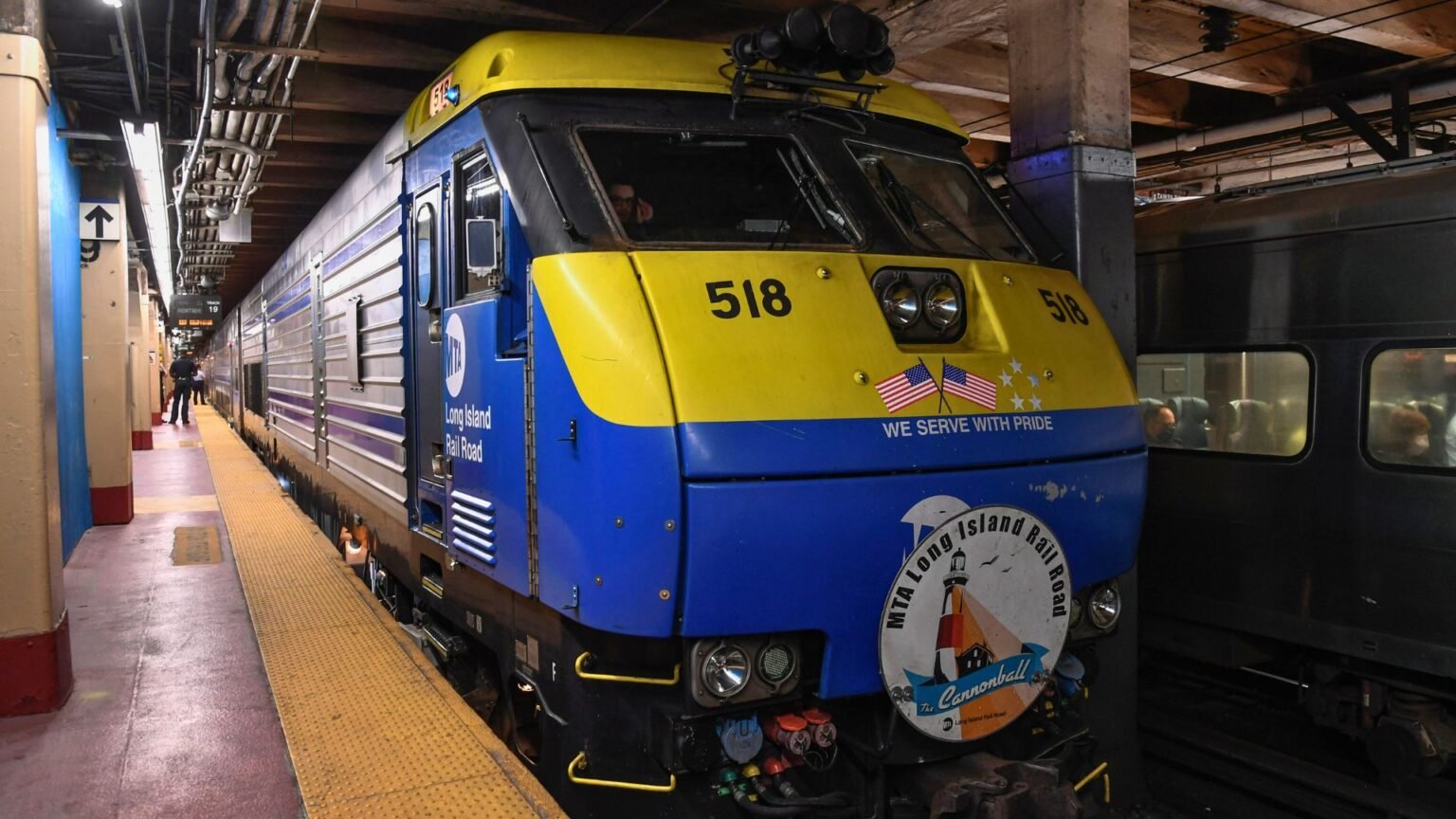The Long Island Railroad (LIRR) is the largest commuter railroad in the United States. In 2024, it served 83.8 million passengers — short of its 2019 record.
But many of the railroad’s lines suffer from limited speed, outdated infrastructure, and indirect connections to Manhattan — all of which contribute to slow commute times.
One line in particular stands out: the Oyster Bay Branch. Currently, the 25-mile trip from Glen Head on the Oyster Bay Branch to Penn Station can take over an hour.
But a study published this month by the Transit Costs Project says that trip could be cut to as little as 42 minutes. How? Through electrification.
LIRR Efficiency Would Surge With Electrification
The Oyster Bay Branch is a diesel line that runs across Nassau County’s North Shore, with 10 stops over just 13 miles. It’s only electrified up to its first stop at East Williston.
The study finds that this tight spacing makes diesel locomotives a poor fit. Trains accelerate slowly and must decelerate often, stretching commutes and limiting service frequency along the short route.
And it’s not just the Oyster Bay Branch that’s in need of electrification. The eastern ends of the Port Jefferson, Montauk, and Ronkonkoma branches also rely on diesel trains.
According to the Transit Costs Project, electrifying these lines could reduce commute times by as much as 30%.
Faster trains would also clear a key bottleneck near Mineola more efficiently, easing congestion on the LIRR’s busy Main Line and allowing for more frequent service across the network.
The benefits go beyond speed. Modeling by the study’s authors shows electrification could boost ridership by 21%, adding more than 230,000 trips per year. That would make the Oyster Bay Branch the most responsive to electrification of any diesel line on Long Island in terms of percentage growth.
Overhead Lines Could Jump-Start LIRR Reform
Since the early 1980s, the LIRR has centered its operations around the Main Line and the Ronkonkoma Branch, where large park-and-ride facilities have made it easier for commuters from non-electrified branches to drive in and catch electric trains.
But the study argues the LIRR — and U.S. transit systems more broadly — need a philosophical shift, adopting best practices from countries like the U.K., which boasts a more efficient and modern rail network.
Electrifying the Oyster Bay Branch has been proposed for over a century. The biggest barrier has always been cost.
Currently, the LIRR’s electrified lines use a third rail system. But the Transit Costs Project finds that overhead wires, or catenary systems, would be nearly 50% more cost-effective while also improving speed and acceleration.
For example, on the Port Jefferson Branch, overhead electrification would cost about $2.4 billion, compared to $3.1 billion for a third-rail alternative. The study estimates that switching to overhead systems across the MTA network could save as much as $9.3 billion, thanks in part to the fact that overhead lines require far fewer substations.
Lower costs could help overcome the political inertia that has stalled MTA electrification projects for decades.
Beyond just saving time, electrification would deliver broader gains for riders and the LIRR system as a whole. Electrification of the entire Port Jefferson Branch beyond Huntington would accelerate service to Stony Brook University — a growing research hub, commuter school, and regional employer.
Similarly, electrifying the Montauk Branch beyond Babylon would service the popular Hamptons summer route and reduce congestion and pollution along Long Island’s highways.

